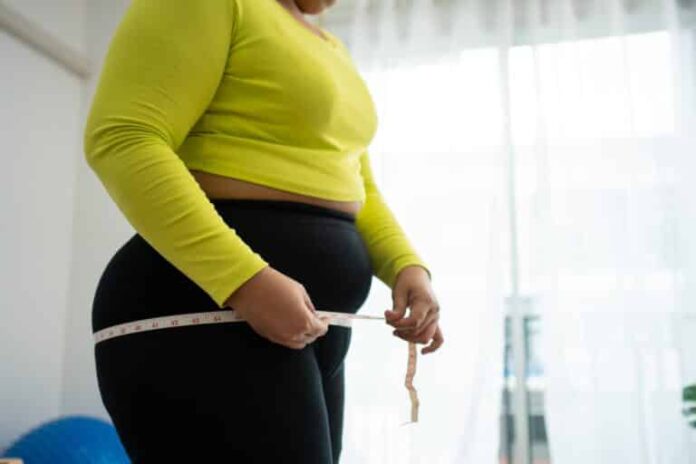Most weight loss journeys often begin with a glance in the mirror and a desire to see changes in specific body areas. Many women ask, “Where do women lose weight first?” or “Where do you see weight loss first?” as they hope to slim down targeted spots. However, the notion of spot reduction is one of the most persistent myths in fitness. This article aims to clear the air and provide a realistic roadmap for managing health and fitness effectively.
Weight loss is about more than just losing kilos. It is about understanding your body’s natural process and adapting accordingly. For many, the initial motivation might come from wanting to burn fat from areas like the hips or waist. However, the reality of fat loss is more complex and spread across the body. Understanding this can help set the right expectations and seek motivation throughout the weight loss journey.
Furthermore, knowing which body parts tend to lose fat first can help women tailor their fitness strategies more effectively. While individual experiences vary due to genetics and lifestyle, common patterns emerge that can guide your efforts. This article will explore these patterns, debunk myths about spot reduction, and provide insights into how women can achieve lasting health benefits through informed, strategic approaches to losing fat.
Spot Reduction is a Myth
The concept of spot reduction, or losing fat in specific parts of the body by targeting those areas through exercise, is a prevalent myth. It is vital to debunk that myth. Understanding the truth about how fat loss works can help set realistic expectations and prevent frustration.
Understanding Spot Reduction
The idea of spot reduction suggests that you can influence where your body burns fat by focusing exercises on that area. For example, doing lots of crunches to lose belly fat or leg lifts to slim down thighs. However, scientific studies consistently show that this is not how our bodies work. Fat loss occurs across the body according to your genetic predisposition, not where you exert the most physical effort.
The Science Behind It
When you exercise, your body burns fat from all over, not just the area that you work on. This process involves mobilising fatty acids into the bloodstream to be used as energy. Hormones regulate this process and do not target specific areas just because those muscles are active. A study shows that participants who focused on exercising their legs did not lose more fat in their legs compared to other areas of their body. Instead, fat reduction was observed generally across the body.
Healthier Approaches to Fat Loss
Rather than attempting spot reduction, a more effective approach is to engage in comprehensive physical activities that increase overall body metabolism and promote fat loss globally. Incorporating a mix of cardiovascular exercises, strength training, and flexibility workouts can help reduce overall body fat more efficiently and sustainably. Additionally, managing diet and ensuring a balanced intake of nutrients play a crucial role in supporting fat loss and overall health.
Fat Loss vs. Weight Loss
Understanding the difference between fat loss and weight loss is crucial for setting appropriate health and fitness goals. Many people start their fitness journey hoping to lose fat, but often mistake changes in body weight as an indicator of success.
Defining Fat Loss and Weight Loss
Weight loss refers to a decrease in overall body weight from muscle, fat, water, and other tissues. In contrast, fat loss is specifically about reducing the amount of body fat we carry, which is a more accurate measure of health improvement. Fat loss tends to be more sustainable and beneficial for long-term health as it involves reducing adipose tissue, which leads to various diseases.
Why Fat Loss Matters More
Focusing on fat loss rather than weight loss is important because muscle mass plays a crucial role in metabolism. Losing muscle mass, which can occur with unspecific weight loss, can slow down your metabolism. That makes it harder to maintain weight loss over time. Fat loss, on the other hand, improves body composition, enhances metabolic health, and increases physical fitness.
Measuring Fat Loss
Unlike general weight loss, tracking fat loss requires specific methods like body fat percentage measurements using callipers or body composition scales. These tools provide a clearer picture of how much fat you are actually losing. It helps to tailor your diet and exercise regimen more effectively.
Focusing on fat loss rather than just weight loss can lead to more significant health benefits. These benefits include improved metabolism, better hormonal balance, and a more toned physique. This approach also encourages the maintenance of muscle mass, which not only contributes to a healthier body but also aids in more effective and sustainable fat burning.
Where Do You Lose Fat First?
Embarking on a weight loss journey is a transformative process that varies significantly from one person to another, especially among women. Many wonder, “Where do women lose weight first?” The answer is not straightforward, as it deeply depends on individual body types, genetic predispositions, and lifestyle factors. Let us explore the common areas where women may first notice fat loss.
Understanding Fat Loss Distribution
The body reduces fat in a pattern often predetermined by genetics. Typically, the first noticeable changes occur in places where less fat accumulates, such as the face and collarbones. As fat loss continues, it becomes more apparent in other areas. Women’s bodies often store fat in the hips, thighs, and buttocks—areas linked to reproductive functions. These areas are more resistant to fat loss due to higher concentrations of alpha-adrenergic receptors that slow down fat release.
Scientific Insights into Fat Mobilisation
Fat loss initiates through a process called lipolysis, where lipids break down into free fatty acids and glycerol. The body then utilises them for energy. Contrary to popular belief, exercising specific areas does not lead to targeted fat loss. Instead, your body mobilises fat from all over as it enters a calorie deficit, regardless of which muscles you work on. Studies indicate that while you may initially start seeing a reduction in specific areas like the upper body or the abdominal region, these changes are largely influenced by where your body naturally stores less fat.
Role of Hormones and Lifestyle
Hormonal changes and lifestyle choices greatly influence where and how you lose fat. For instance, stress and sleep have profound effects on fat distribution and metabolism. Cortisol, a hormone released in response to stress, often leads to fat accumulation around the midsection. Meanwhile, adequate sleep helps regulate hormones like leptin and ghrelin, which control hunger and fullness, aiding in more uniform fat loss across the body.
Understanding these dynamics can help you adjust your expectations and focus on a holistic approach to weight loss, including a balanced diet, regular exercise, and stress management, rather than chasing the myth of spot reduction.
HealthifyMe Note
In this journey of fat loss, it’s crucial to approach weight management with informed strategies rather than succumbing to common myths or extreme measures. Understanding the science behind fat loss and having patience with your body is key to achieving and maintaining your goals. Many fall into the trap of expecting quick fixes or drastic visible changes in specific areas, which can lead to disappointment and unhealthy practices. Remember, sustainable weight loss is a gradual process. It is important to create habits you can maintain in the long run rather than focusing on immediate results. Engaging with professionals who can provide tailored advice and support based on your unique body type and lifestyle preferences is crucial. It ensures you are not only losing weight but doing so in a healthy, balanced way that benefits your overall well-being.
The Final Word
It is vital to remember that the path to losing fat is not linear and differs for everyone, especially for women. The key areas where fat is lost first can vary widely, but a consistent, well-rounded approach to health and fitness can lead to sustainable fat loss and improved health. The most important takeaway is to focus on holistic health improvements rather than obsessing over losing fat in specific areas.
Ready to embark on a health journey that respects your body’s natural processes and leads to lasting changes? Visit the HealthifyMe Store to explore customised diet plans and workout programs tailored by our expert nutritionists and fitness coaches.
Start your journey towards a healthier, fitter you today!
Frequently Asked Questions
Research Sources
1. Regional fat changes induced by localised muscle endurance resistance training
3. Why does fat deposit on the hips and thighs of women and around the stomachs of men?
4. Influence of previous body mass index and sex on regional fat changes in a weight loss intervention
6. Successful weight loss maintenance: A systematic review of weight control registries













